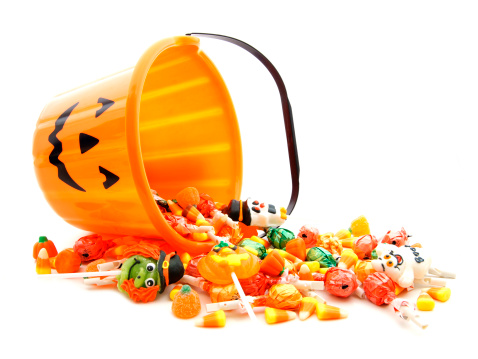Halloween haul? If you have to avoid certain foods due to dietary choices or restrictions, label reading can be downright frightening. Here are eight confusing ingredients and what they mean for gluten-free, dairy-free, or vegan/vegetarian eaters.
Halloween haul? If you have to avoid certain foods due to dietary choices or restrictions, label reading can be downright frightening. Here are eight confusing ingredients and what they mean for gluten-free, dairy-free, or vegan/vegetarian eaters.

With Halloween upon us, you've got to watch out for “trick”-y ingredients in favorite treats. For those who have to avoid certain foods due to dietary choices or restrictions, label reading can be downright frightening. Here, I focus on eight ingredients that are particularly scary for those who have to eat gluten-free, dairy-free, or who want to avoid animal-based products.
Casein and whey. Casein and whey are two proteins found in milk, so vegans and people with a milk allergy need to avoid them. Whey and whey protein concentrate also contain lactose, so don’t eat them if you’re lactose-intolerant. All FDA-regulated foods containing casein and whey are required to list the word “milk” on the label, so be sure to read the ingredients statement, even if the product says “dairy-free.”
Gelatin. Who would have thought colorful Jell-O (and similar products) contains animal products? But it does: Gelatin is derived from various animal by-products. Kosher gelatin, on the other hand, is made from a sea vegetable, so it’s suitable for vegans and vegetarians.
Maltodextrin. While the “malt” in barley malt, malt syrup, and malt extract indicates the presence of gluten, maltodextrin is actually gluten free. It can be derived from a variety of starches, but products made here in the United States are unlikely to use wheat; and even if it is derived from wheat, maltodextrin is such a highly processed ingredient that the protein is removed, making it gluten free. When it’s made from wheat starch, “wheat” must be declared on the label.
Modified food starch. This can be made from a variety of food starches, including corn. It is gluten-free unless made from wheat. When it is made from wheat, “wheat” will appear on the label.
Monosodium glutamate (MSG). MSG is gluten free; glutamate references the presence of the amino acid glutamic acid, not gluten. MSG is a flavor enhancer made from fermenting corn, sugar beets, or sugar cane.
Rennet. Rennet or rennin is an enzyme used in cheese making. It is derived from milk-fed calves, so both vegans and vegetarians tend to avoid it. Vegetable-based rennet is available and is usually labeled as such on ingredients statements.
Yeast. Active dry, autolyzed, baker’s, and nutritional yeasts are gluten free. Brewer’s yeast, when a byproduct of beer, is not gluten free. It’s difficult to know the source of brewer’s yeast from a label, so all brewer’s yeast should be avoided if the source isn’t known. Yeast extract may or may not be made from barley. Since barley doesn’t have to be called out on food labels here in the U.S., gluten-free consumers should use caution when seeing this ingredient.
Got an ingredient that is particularly tricky for you? Let me know in the comments below or on Facebook so I can compile a list for future posts.
